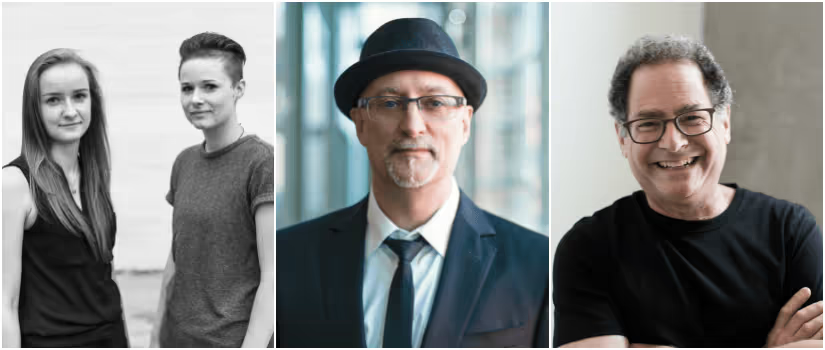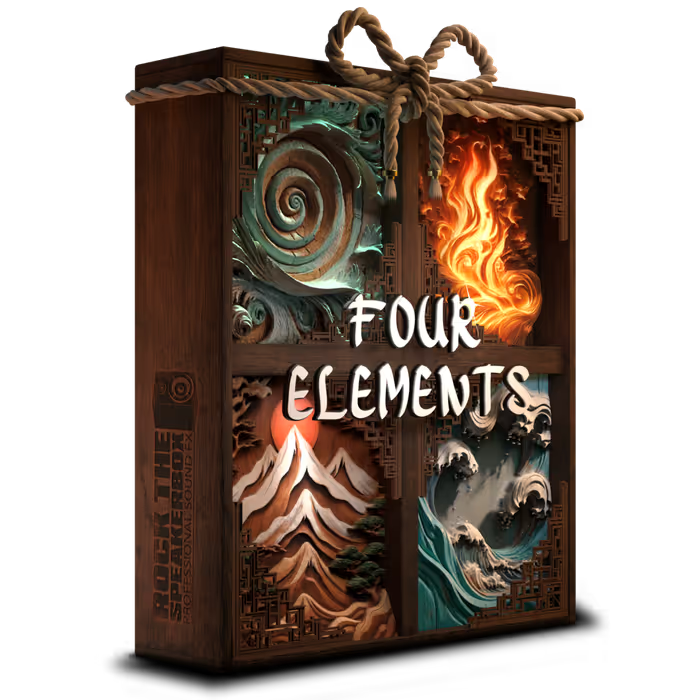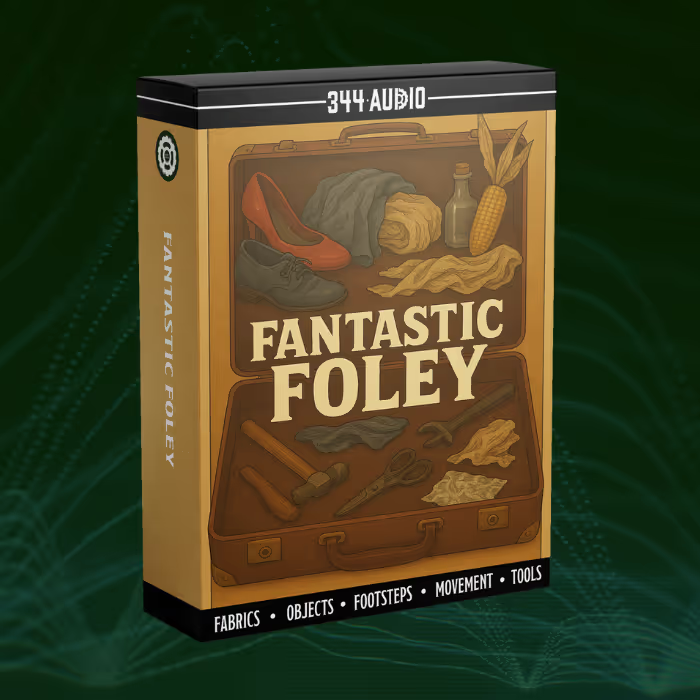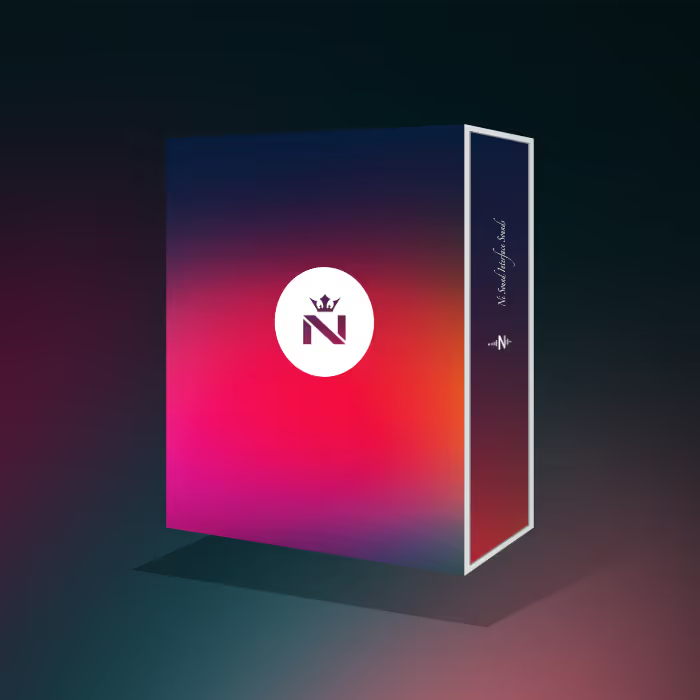In these 3 new interviews, you'll hear what it takes to get started and succeed in audio branding from Steve Keller, music editing from Steven Saltzman, and sound for VR/AR/MR from Helena McGill & Anna Woźniewicz:
• How to succeed in Theater Sound Design, Podcast Sound Design, and Podcast Production – with Kirsty Gillmore, Jeff Schmidt, and Matthew McLean
• How to succeed in sound design for games, animation, and television – with Anne-Sophie Mongeau, Jeff Shiffman, Kate Finan, & Peter D. Lago
• How to succeed in sound design for Film, Documentaries, and Trailers – with Nia Hansen, Peter Albrechtsen, & Karél Psota
• How to succeed in UI/UX Sound Design, ADR Recording, & Audio Programming – with Henry Daw, Emma Butt & Adam Croft
• How to succeed in Sound Editing, Sound for Advertising, and Production Sound – with Lucy J Mitchell, Chris Pinkston and Irin Strauss
• How to succeed in Field Recording, Foley and Teaching Sound – with Thomas Rex Beverly, Ronnie van der Veer, and James David Redding III:
• Explore more than 40 additional resources on how to succeed in sound here
Audio Branding – insights from Steve Keller:
• What working in audio branding entails:
On the one hand, audio branding is simply the use of music and/or sound to communicate brand attributes, meaning, and purpose in a way that enhances brand recall and linkage. This can certainly be accomplished through the simple pairing of an audio stimulus with other brand identifiers. It’s a tactical use of sound to drive recognition.
On the other hand, audio branding is also the use of sound to align brand intent with consumer perception in a way that produces measurable results. Framed this way, audio branding is a strategic process that goes beyond a tactical execution. It’s a design approach that helps brands make better choices about the sounds they associate with their brand.
I’m more interested in the later approach. I’m fond of saying, “Audio branding doesn’t start with your ears. It starts with what’s between them.” I want to explore the intersection of behavioral economics, consumer insights, psychoacoustics and psychophysics.
Audio branding doesn’t start with your ears. It starts with what’s between them
I want to understand how music and sound shape our perception and behavior, and how a strategic approach to audio in a brand context can produce a tangible return on investment.
• What it takes in terms of skills and gear:
Audio branding is, in practice, a type of alchemy: a blend of science and art. To be an audio alchemist, you need an understanding of consumer psychology, statistics, testing methodologies, behavioral economics, design thinking, music science, and psychophysics. It also helps to have experience with composition, sound design, audio production, music rights (particularly copyrights), and leading creative teams.
Finally, as you’re often collaborating with brand marketing and advertising teams, it’s important to understand how these businesses approach strategy and creativity.
Obviously, it’s difficult to find all these things in one individual, which is why it’s important to surround yourself with a team that can offer a degree of specialty in all these areas. Learn what you do best and then seek out others to compliment your abilities.
When it comes to the “art,” you obviously need the capability to create the audio assets. Audio software to record and edit is important, as well as a good microphone and signal processing gear (like preamps and compressors). Most composers or sound designers have these tools at their disposal.
At the end of the day, when it comes to great audio branding, great production isn’t a differentiator. That’s simply a given. The audio branding agencies and consultancies that set themselves apart do it through their approach to design, research, and producing a measurable ROI for their clients.
• How to learn it:
Picking up on the previous question about the gear needed for audio branding, I’d suggest that your most valuable piece of “gear” is your brain. Before you can start to connect the sonic dots, you have to find them. We know that sound doesn’t happen in a vacuum. Neither does audio branding. Read everything you can, reach out to other audio branding practitioners and learn from therm. Look for case studies and academic research that can inform your decision-making process. Join a professional organization where you can trade insights and stories. Consider expanding your knowledge across other disciplines.
• How to find work:
Audio branding has matured quite a bit in the last 15 – 20 years. There are some very good audio agencies now around the world. Reach out to them about potential job opportunities or, if you’re a student, internships.
If you’re a composer/designer interested in the field, put together a reel and target companies in the audio branding space. Make sure your reel showcases your ability to think about music and sound from a design perspective.
Make sure your reel showcases your ability to think about music and sound from a design perspective
If you’re a strategist or a researcher, see if there are agencies or consultancies that are interested in developing audio branding services.
Of course, you can also try to create your own company. With the rise of voice interactivity, there’s a renewed interest in audio branding. The good news: this interest is opening up more conversations with brands about the strategic use of sound and music in branding and marketing. The bad news: there’s more competition in the field.
• Essential advice for working and making it in audio branding:
I think it helps to have a certain amount of patience and perseverance. Look for the parts of our discipline that need to be challenged. How can you add to the body of knowledge? What new research methodologies or tools could be developed?
• Further reading and resources:
If you’re building a library, here are a few titles from my shelf that I think should be on yours:
• Barden, Phil. 2013. Decoded: The Science Behind Why We Buy. Wiley.
• Chaudhuri, Arjun. 2006. Emotion and Reason in Consumer Behavior. taylor & francis.
• Crook, Tim. 2012. The Sound Handbook. Routledge.
• Franzen, Giep, and Sandra E. Moriarty. 2008. The Science and Art of Branding. Routledge.
• Gabrielsson, Alf, and Roy Bradbury. 2011. Strong Experiences with Music. Oxford University Press.
• Krishna, Aradhna. 2009. Sensory Marketing: Research on the Sensuality of Products. Routledge.
• Ltd, APG. 2018. How not to Plan: 66 ways not to cock it up. Troubador Publishing.
• Snijders, Weimer. 2018. Eat Your Greens. Matador.
• Sterne, Jonathan. 2012. The Sound Studies Reader. Routledge.
About Steve Keller:
Steve is Sonic Strategy Director for Pandora Media, where he blends art and science into award-winning audio strategies and creative content for a variety of global agencies and brands.
With a degree in psychology and over 30 years of experience in the music and advertising industries, Steve’s work explores the ways music and sound affect consumer perception and behavior. Recent experiments have examined the relationship between sound and taste, the existence of audio archetypes, and how bias impacts the aesthetic judgements of advertising professionals. Hear more in his TEDx Talk below:
He is the 2017 recipient of the iHeartMedia Scholarship for Leadership in Audio Innovation, and is currently completing an Executive MBA through the Berlin School of Creative Leadership, focused on how brands can more effectively measure and predict returns on audio investments.
 These interviews are also available in the massively-popular - and entirely free - Sound Success Guide, a 60+ page guide featuring insights from 20 industry experts on how to get started and succeed in 18 different types of audio jobs:
These interviews are also available in the massively-popular - and entirely free - Sound Success Guide, a 60+ page guide featuring insights from 20 industry experts on how to get started and succeed in 18 different types of audio jobs: Music Editing – insights from Steven Saltzman:
• What working in music editing for film and television entails: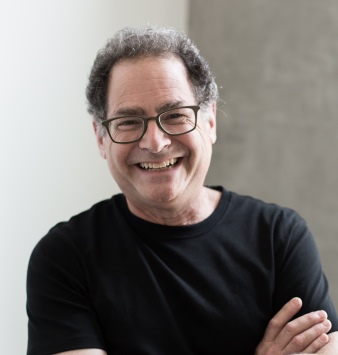
Our job description encompasses working with the multi-faceted concerns of all music in a TV show or film. While any one project may not require all areas of a music editor’s expertise, our job and involvement can include any one or more of the following:
• Creating music spotting notes; a detailed representation of each score cue and source music in a project. Usually this includes a description of the scene where music will go with a time code start, end and length. This document is a guide for the director, editor, music supervisor and composer going forward through the post production and composition process.
• Creating a temporary music score by digitally editing pre-existing movie music as a primary resource.
• Prepping and managing all the music including the placement and editing of songs and source material for a temporary mix. This will then allow the movie to be played for an audience with music prior to the composer being hired or if the composer has not completed the score.
• Once a composer is hired, the music editor works closely with the composer’s team to help present music demos or mock-ups for the director and / or producers approval.
• Once the score is approved for recording or production, the music editor helps set up the Pro Tools sessions and clicks for the musicians and recording sessions.
• Upon the completion of the score, each cue is properly stemmed upon guidance from the music editor and then they prepare the score and all the songs and source materials for the mix on the dub stage.
• The music editor is on the dub stage as the music representative for both score and songs. The composer does not usually attending the dub mix.
• After the dub and the print master is made, the music editor compiles the preliminary music cue sheet to then be sent to the legal department for preparation as the final cue sheet. This document then gets distributed to all the respecting PROs for royalty income distribution.
• Our work is not just technical as we often travel a thin line helping to manage and ‘protect’ the egos, desires, whims, and creative decision for better or worse, among the many parties in a project. These can include the director, composer, producers, music supervisor, songwriters, picture editor, mixers, assistant picture editors, and anybody else!
• What it takes in terms of skills and gear:
Almost exclusively, Pro Tools is the DAW of choice for music production, recording, music editing and mixing. One must be nearly an expert at using and problem solving with Pro Tools.
• How to learn it:
Many music editors come to this profession through other related career paths such as composing, being a musician, sound effects editor, picture editor, or mixer, etc.
While I do teach a course in music editing, there are also some universities and post production audio trade schools that have courses on the subject. Usually one learns music editing by following or being mentored by an experienced music editor. There are some unofficial assistant / internship avenues as well.
• How to find work:
Working as a music editor is usually a freelance career where we are constantly networking and building contacts to help guide our career moving from one job to the next.
There are however some post production audio facilities that have a small staff of sound editors and mixers where music becomes an element that needs to be managed along with the other sound materials. In these cases, there may be a sound editor that becomes a music editor by the nature of handling the music as well and perhaps the mixing… all done by one or two people.
• Essential advice for working and making it in music editing:
I would suggest that one educate themselves with all the details of this work by reading about it, meeting and talking with music editors, and visiting as many mixes and dubs to observe how the variety of sounds get mixed.
Once you feel like this work may be a match for you, your temperament, and skill level, jump in with both feet and don’t give up!
Once you feel like this work may be a match for you, your temperament, and skill level, jump in with both feet and don’t give up!
• Further reading and resources:
One of the best avenues is to meet and talk with anybody and everybody in post-production. People usually love to talk about their work and experiences… if they have time to talk. Again, reading about this work and getting out there and finding out what it really is like is critical.
If interested in my book, please follow the link here – and for a 20% discount use this code: FLR40
About Steven Saltzman:
Music editor and composer Steven has over twenty years of music editing experience. He’s earned a Golden Reel Award and four nominations. Recent works include: Mary (2019), Donnybrook (2018), and The Revenant.
Steven recently published a book on music editing called Music Editing for Film and Television, The Art and The Process, and teaches music editing and lectures at various institutions and venues around the world.
He is a new member of the Academy of Motion Picture Arts and Sciences, serves on the Board of Directors for Entertainment Industry Professionals Mentoring Alliance (EIPMA), a past board member of the Motion Picture Sound Editors, (MPSE) and currently member of the Motion Picture Editors Guild, an Associate Member of The Guild Of Music Supervisors and the Society of Composers and Lyricists.
Sound Design: VR/AR/MR – insights from Helena McGill and Anna Woźniewicz:
• What working in VR/AR/MR sound design entails:
Creating a mix for AR/VR starts with the same theoretical concepts and techniques as traditional sound design, but then they’re taken a step further. You still need to understand how sound affects people’s emotions and where to use certain sound effects for maximum emphasis in a story, and be able to execute those concepts technically.
Then, there’s just the added step of either spatializing the mix into a 360-degree space, or bringing your sounds into a game engine, etc. The foundation is the same, but in order to extend the basics to AR/VR projects, you’ll need a knowledge of a lot more plug-ins and software, plus psychoacoustic concepts that are unique to a 360-degree context.
• What it takes in terms of skills and gear:
Skills: You need to understand the basics of sound design — editing dialogue, sound effects, backgrounds, plus re-recording mixing and when and where to use which plug-ins. You should also be well-versed in location recording, as it gives you context for the work you’re doing in post. You should also be familiar with game engines like Unity and Unreal Engine, plus middleware like wWise and Fmod. Additional spatial SDKs include Google Resonance and the Oculus spatializer. It also helps to have some basic coding knowledge.
Gear: You’ll need a DAW (Pro Tools, Reaper, etc.) to create sound effects for object-based mixes, or to create full ambisonic mixes for 360 video content. A sound library is also helpful, that way you have somewhere to pull sound effects from to mix and match and create your own, unique soundscapes.
• How to learn it:
• Get on-set, work on low-budget projects.
• Take unpaid work until you feel confident in your abilities.
• Watch YouTube tutorials.
• Join the FB360 Spatial Workstation Facebook group.
• Practice by doing — play around with different ambisonic microphones, plug-ins, and SDKs.
• How to find work:
Short term/contract work is available, but is currently harder to find. Team up with a developer and start playing around with spatial tools; network and connect with XR content creators. There are always projects in need of audio, but the budget is often a limiting factor.
As the industry reorganizes itself as we head into 2020, stay on top of current trends in tech and entertainment; the future of audio is immersive and interactive.
• Essential advice for working and making it in VR/AR/MR sound design:
Stay on top of new software and workflows — there are constantly new microphones or ambisonic plug-ins or SDKs being released. Be aware of what’s out there and take time to experiment and get to know the main ones, so that you can recognize each one’s strengths and weaknesses and make sure you’re using the best tools for that specific project.
Reach out to 360 production companies or groups that are just starting to expand into VR content.
Half our job has been educating on not only what spatial audio is, but what it can bring to a production
• Further reading and resources:
Designing 3D audio combines a heavy scientific focus with room for creative experimentation. Brush up on basic psychoacoustic concepts: how humans hear and perceive certain auditory events. This has been helpful in designing a mix that influences the listener to engage with the full 360 degree space.
The Spatial Audio Facebook group has also been an invaluable asset; updates to software and proprietary plugins are announced, and the community is very open to new research and real-time troubleshooting.
About Helena McGill and Anna Woźniewicz:
Helena and Anna are the co-founders at Noctvrnal, an audio post production studio based in Los Angeles that specializes in interactive audio for XR, location-based experiences, and installations.
Noctvrnal is bringing immersive sound design to the forefront of virtual and augmented reality by pushing the boundaries of current techniques and harnessing psychoacoustic research to create a powerful listening experience. The team is passionate about creating new worlds through sound, and their work has been featured at MIT, Yale, USC, and VRLA.
• These fascinating new tools let you do 3D sound mixing – directly in VR
• How to build Audio for VR Games
• In-depth: 5D Audio in VR – Expanding 3D audio to enhance VR experiences using higher dimensions of sound
• In-depth Video: Immersive Audio for VR Workflows
• Podcast Roundup: The VR Edition
• How to unlock the creative power of audio in VR
A big thanks to Steve Keller, Steven Saltzman, Helena McGill & Anna Woźniewicz for sharing their valuable insights with us!
Power Lists - essential audio resources and insights:
• The Sound Design Power List
• The Game Audio Power List
• The Film Sound Power List
Succeed in sound:
• How to Set (and Get) the Right Price for Your Audio Work
• 10 Essential Tips for Game Audio Freelancers
• How to be a successful sound designer – with Scott Gershin
• How To Actually Live as an Audio Freelancer – by Melissa Pons
• How to set your sonic creativity free & overcome creative inhibitions – by Mark Kilborn
• 5 Useful Tips for Upcoming Sound Designers and Sound Editors
• Sound Opinions: How to get game audio pricing right
• Building a successful audio post studio – with Kate Finan and Jeff Shiffman
• Rebuilding your studio: Goals, tips and lessons learned
• Creating audio for games – with Martin Stig Andersen
• A life in sound: How to foster creativity and protect yourself from burning out – with Chance Thomas
• Better audio work habits: How a Wacom Tablet can help reduce the risk of Repetitive Strain Injury (RSI)
• Better audio work habits: How a sit & standing desk can reduce your sedentary studio life
• Tips and thoughts on running your own audio post production house – with William McGuigan
• 30+ year audio veteran Andy Greenberg, on building client relationships in the advertising industry
• 7 Sound Alternatives to Working For Free
• Audio Outsourcing Success: Essential Tips, Thoughts and Working Practices from Adele Cutting
• How to succeed in UI/UX Sound Design, ADR Recording, & Audio Programming
• How to succeed in sound design for Film, Documentaries, and Trailers
• How to succeed in sound design for Games, Animation, and Television
• How to succeed in Field Recording, Foley, and Teaching Sound
• How to succeed in Audio Branding, Music Editing, and sound for VR
• How to succeed in Theater Sound Design, Podcast Sound Design, and Podcast Production
• How to succeed in Sound Editing, Sound for Advertising, and Production Sound
• How to succeed in Sound Editing, Sound for Advertising, and Production Sound
• The Composer Success Series: Composing for Film – ft. Pinar Toprak, Nainita Desai, & Jonathan Snipes
• The Composer Success Series: Composing for TV – ft. Charlie Clouser, Sherri Chung, & Cindy O’Connor
• The Composer Success Series: Composing for Theatre – ft. Elyssa Samsel, Kate Anderson, and Daniel Kluger
• The Composer Success Series: Composing for Games – ft. Inon Zur
• The ‘Quit Aspiring’ book – by Adam Croft
• How to get hired in game audio – thoughts and insights from your potential employer’s perspective
• Why gear is not the ticket to entry in the game audio community
• 4 Effective Ways to Break into Game Audio
• Tips for Creating a Perfect Resume for Audio Industry Jobs
• Yet Another Game Audio Hiring Article – by Ariel Gross
• 5 Tips for Getting a Job in the Audio Industry
• Applying for a job in game audio – by Matthew Florianz
• Freelance Game Audio: Getting Started and finding work – by Ashton Morris
• How to get started (and make it) in game audio – 10+ fundamental questions answered by Akash Thakkar
• Courses: How to network and get paid for your work in the game industry – by Akash Thakkar
• How to Craft a Perfect Cover Letter for Audio Industry Jobs
• Get the weekly Audio Jobs newsletter
• Join the Audio Jobs Facebook group
• Upload your demos to Soundcloud
• Upload your demos to ReelCrafter
• Find interesting audio events around the world
• Find other audio pros around the world
• How to prepare for – and power through – a layoff in the game audio industry, with Brian Schmidt:
• How to Survive a Game Audio Layoff – insights from Damian Kastbauer
• What it’s like to be laid off from your video game studio
• What To Do Before and After Being Laid Off
• Facebook Group: Survival Skills for Creatives
• How To Learn Game Audio Online – A talk with Game Audio Educator Leonard Paul
• Hear the very best podcasts about sound
• Read the 100s of sound stories and guides on the A Sound Effect blog (search for stories here)
• Browse Industry Data: Game Music and Sound Design Salary Survey Results
• Browse 100+ Sound Design Guides
• Find essential books about sound – for film, games and audio post production
• Get tips and ideas for making your own sound effects
• Use the Audio Events Calendar to find audio-related events around the globe
• Get a steady stream of great sound stories from the community
• Discover 1000s of sound libraries from the independent sound community
• Take online courses in Wwise, FMOD Studio, Unity, Pure Data & Unreal at the School of Video Game Audio
• Sound effects survey results: Here are 90+ ideas for new SFX libraries
• How to create an indie sound bundle
• The quick-start guide to adding sound FX library metadata
↑ Back to top

